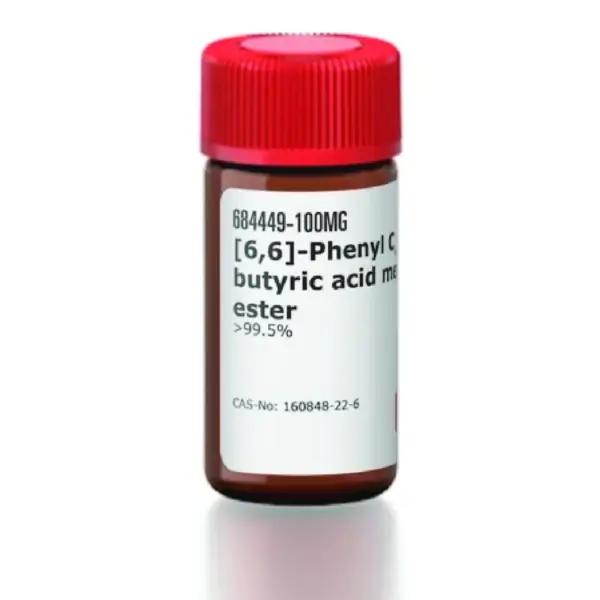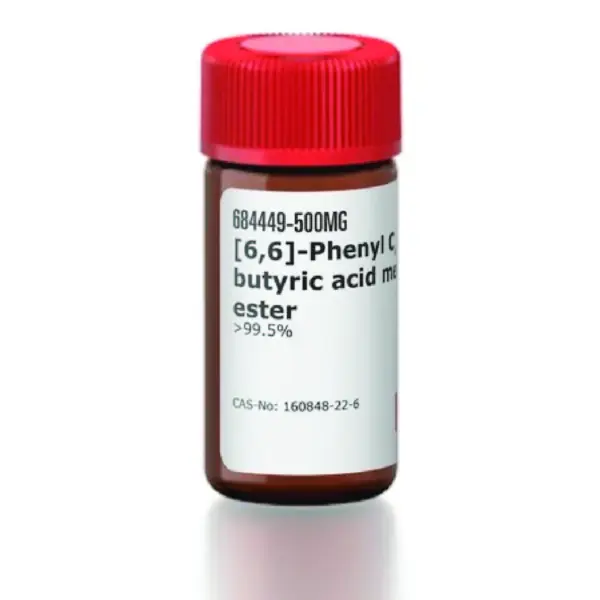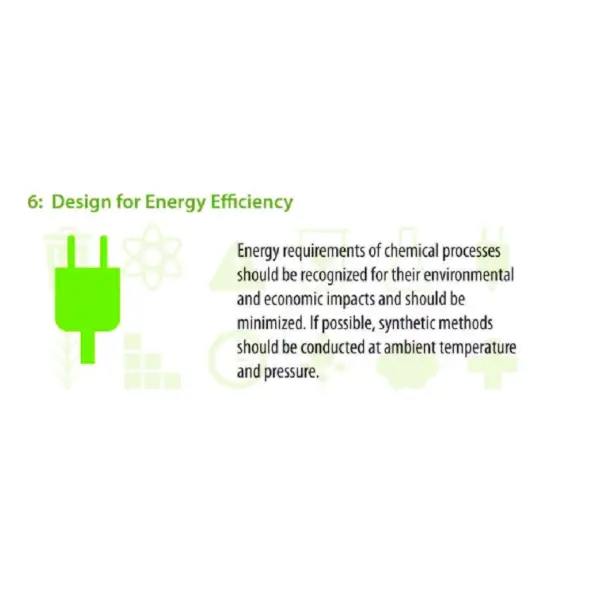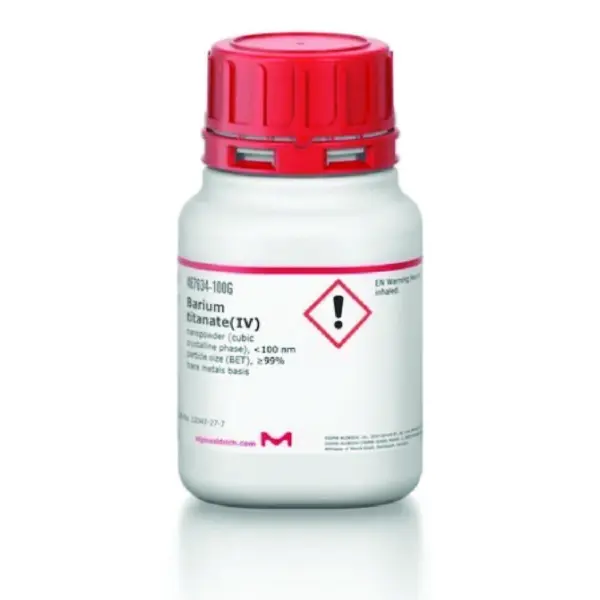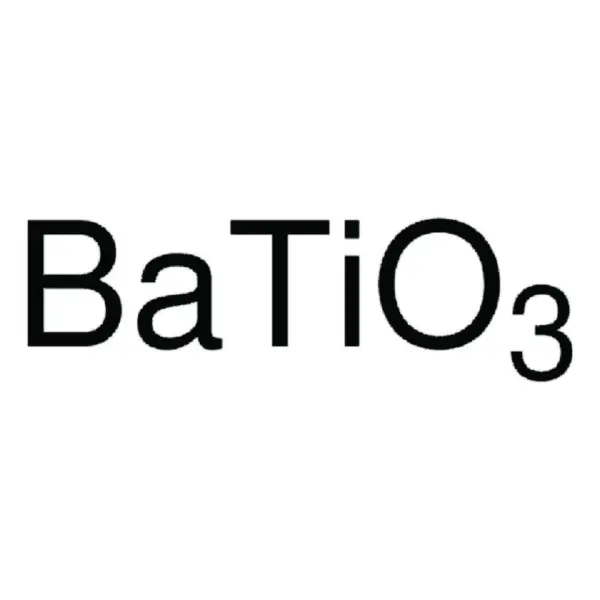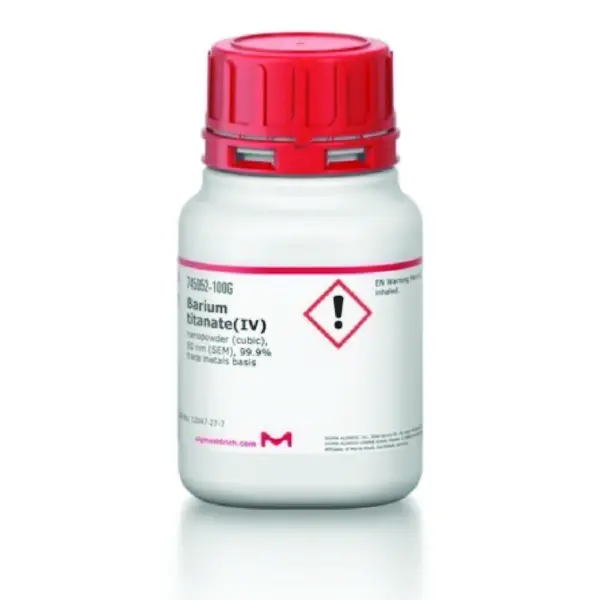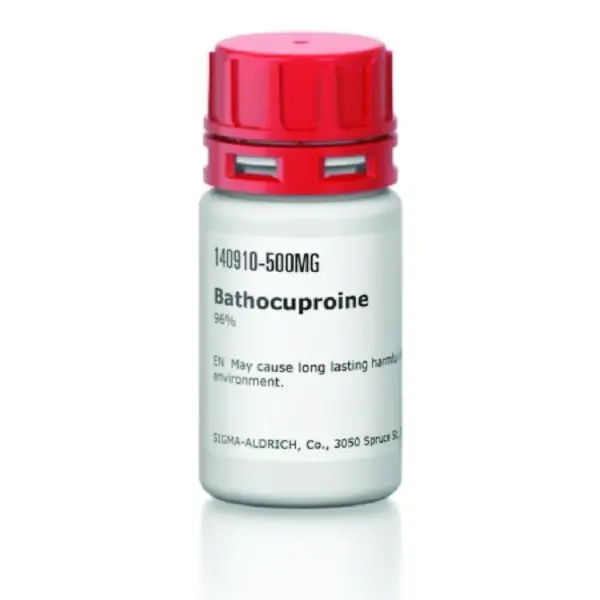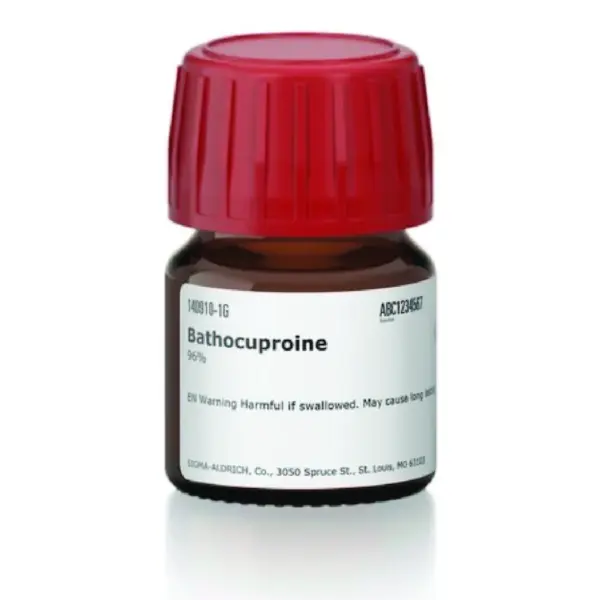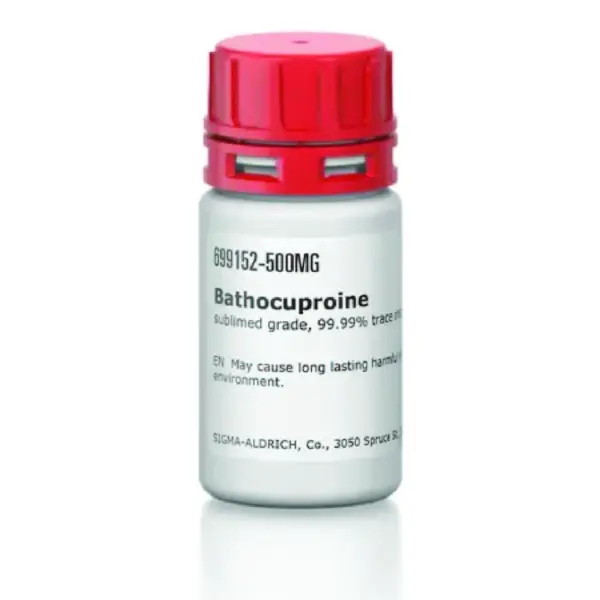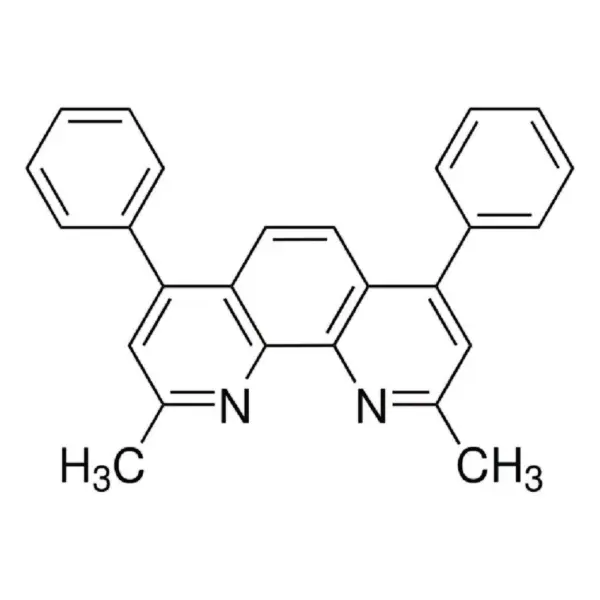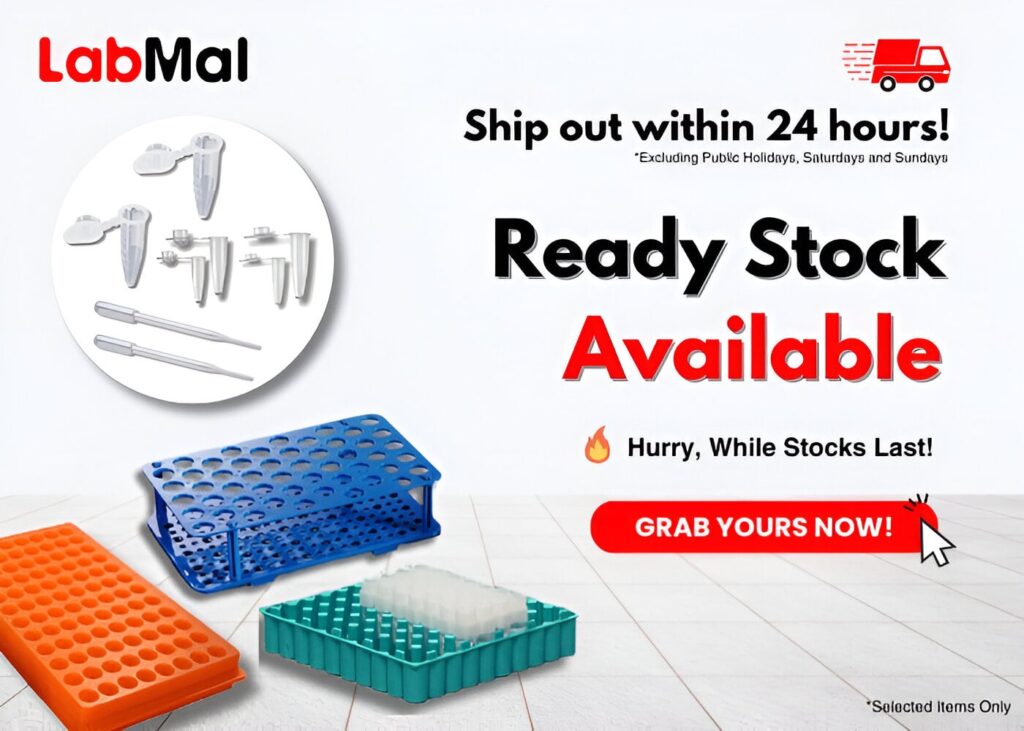
[6,6]-Phenyl C61 butyric acid methyl ester (684430) – Sigma-Aldrich
RM5,005.00Brand:
Sigma-Aldrich
Synonyms
1-[3-(Methoxycarbonyl)propyl]-1-phenyl-[6.6]C61, 3′H-Cyclopropa[1,9] [5,6]fullerene-C60-Ih-3′-butanoic acid 3′-phenyl methyl ester, PCBM, [60]PCBM
General Description
[6,6]-Phenyl C61 butyric acid methyl ester ([60]PCBM) is a methanofullerene that has a better diffusion in organic molecules than fullerenes(C60). It has high electron mobility which allows it to be used as an electron acceptor in major electrochemical applications.
Applications
Soluble n-channel organic semiconductor. For use as an n-type layer in plastic electronics, especially bulk heterojunction OFETs and photovoltaic cells (PVs).
[60]PCBM is an n-type semi-conductor widely used as an a electron transport material with low cost and high surface area in different energy based applications like organic photovoltaics (OPVs), perovskite solar cells (PSCs), organic field effect transistors (OFETs) and photodetectors
[6,6]-Phenyl C61 butyric acid methyl ester (684449) – Sigma-Aldrich
Price range: RM1,596.00 through RM4,427.00Brand:
Sigma-Aldrich
Synonyms
1-[3-(Methoxycarbonyl)propyl]-1-phenyl-[6.6]C61, 3′H-Cyclopropa[1,9] [5,6]fullerene-C60-Ih-3′-butanoic acid 3′-phenyl methyl ester, PCBM, [60]PCBM
General Description
(6,6)-Phenyl C61 butyric acid methyl ester ((60) PCBM) is a methanofullerene that has a better diffusion in organic molecules than fullerenes (C60). It has a high electron mobility which allows it to be used as an electron acceptor in major electrochemical applications.
Applications
(60)PCBM is an n-type semi-conductor widely used as an a electron transport material with low cost and high surface area in different energy based applications like organic photovoltaics, perovskite solar cells, field effect transistors and photodetectors.
Soluble n-channel organic semiconductor. For use as an n-type layer in plastic electronics, especially bulk heterojunction OFETs and photovoltaic cells (PVs).
[60]PCBM is an n-type semi-conductor with low cost and high surface area. It is widely used as an electron transport material in various energy-based applications like organic photovoltaics, perovskite solar cells, field effect transistors, and photodetectors.

[6,6]-Phenyl C61 butyric acid methyl ester (684457) – Sigma-Aldrich
RM5,289.00Brand:
Sigma-Aldrich
Synonyms
1-[3-(Methoxycarbonyl)propyl]-1-phenyl-[6.6]C61, 3′H-Cyclopropa[1,9] [5,6]fullerene-C60-Ih-3′-butanoic acid 3′-phenyl methyl ester, PCBM, [60]PCBM
General Description
[6,6]-Phenyl C61 butyric acid methyl ester ([60]PCBM) is a methanofullerene that has a better solubility in organic solvents than fullerenes(C60). It has high electron mobility, which enables its function as an electron acceptor in electrochemical applications.
Applications
Soluble n-channel organic semiconductor. For use as an n-type layer in plastic electronics, especially bulk heterojunction OFETs and photovoltaic cells (PVs).
[60]PCBM is an n-type semi-conductor widely used as an electron transport material with low cost and high surface area in different energy based applications like organic photovoltaics (OPVs), perovskite solar cells (PSCs), field effect transistors (FETs) and photodetectors

1,2-Butanediol purum, ≥98.0% (GC) (Sigma)
Price range: RM280.00 through RM936.00Brand:
Sigma
Description
Grade: Purum
Assay: ≥98.0% (GC)
Synonym: 1,2-Butylene glycol
1,2-Butanediol has been used:
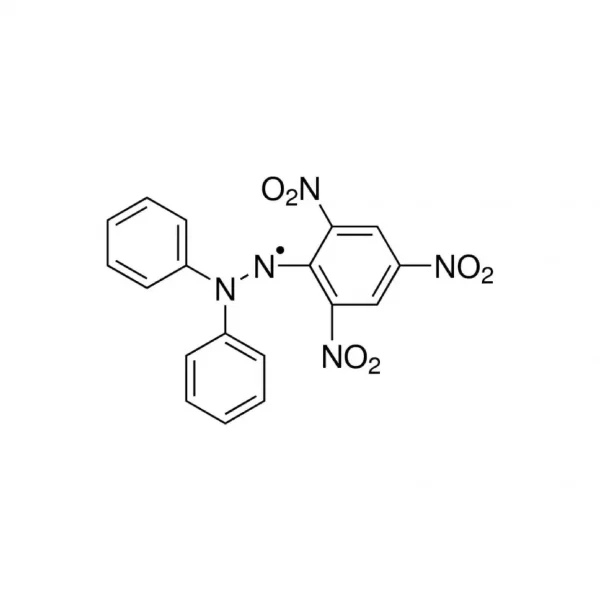
2,2-Diphenyl-1-picrylhydrazyl – Sigma – Aldrich
Price range: RM825.00 through RM2,336.00Brand:
Sigma-Aldrich
Description
CAS Number: 1898-66-4
Molecular weight : 394.32 g/mol
Empirical formula : C18H12N5O6
Synonyms : 1,1-Diphenyl-2-picrylhydrazyl radical, 2,2-Diphenyl-1-(2,4,6-trinitrophenyl)hydrazyl, DPPH
2,2-diphenyl-1-picrylhydrazyl is a type of free radical that can accept hydrogen from antioxidants, making it a useful tool in the DPPH assay for evaluating the antioxidant activity of various natural samples, including wine, fruits, and herbal tea.

3-Chloroperbenzoic acid, ≤77% (Sigma-Aldrich)
RM691.00Brand:
Sigma-Aldrich
Description:
CAS number: 937-14-4
Chemical Formula: ClC6H4CO3H
Molar Mass: 172.57 g/mol
Synonyms: 3-Chloroperoxybenzoic acid, meta-Chloroperbenzoic acid, MCPBA
General description
3-Chloroperbenzoic acid is a strong oxidizing agent mainly used for the epoxidation of alkenes and also in the Baeyer-Villiger oxidation of ketones to esters.
Application
3-Chloroperbenzoic acid has been used in the oxidation of N–p-tolylsulfinyl-(E)-1-phenylethylideneimine to N–p-tolylsulfonyl (E)-1-phenylethylideneimine using dichloromethane as a solvent. It has also been used in the preparation of mono- and di-epoxy-functionalized poly(3-hydroxybutyrate)-based reactive polymers. MCPBA is also an effective oxidizing agent for the conversion of α-amide substituted polyesters to their corresponding polysulfones with tunable thermal properties.
Effective oxidant for epoxidizing di-, tri-, and tetra-substituted olefins.

4-Nitrophenyl butyrate, ≥98% (Sigma-Aldrich)
Price range: RM485.00 through RM2,765.00Brand:
Sigma-Aldrich
Description
CAS number: 2635-84-9
Chemical Formula: C10H11NO4
Molar Mass: 209.20 g/mol
Synonyms: p-Nitrophenyl butyrate, Butyric acid 4-nitrophenyl ester
General description
4-Nitrophenyl butyrate is a substrate for esterase, and lipase enzyme. Hydrolysis of 4-nitrophenyl butyrate by these enzymes releases the chromophore, 4-nitrophenolate which is spectrophotometrically analysed at 415 nm.
Application
4-nitrophenyl butyrate has been used:
• as a substrate for esterase activity in monocyte-derived macrophage cell line in response to polyethylene
• as a substrate for mycobacterial phospholipase A and mycobacterial cutinase activity
• as a substrate to determine the effect of buffers and solvents on human carboxylesterase
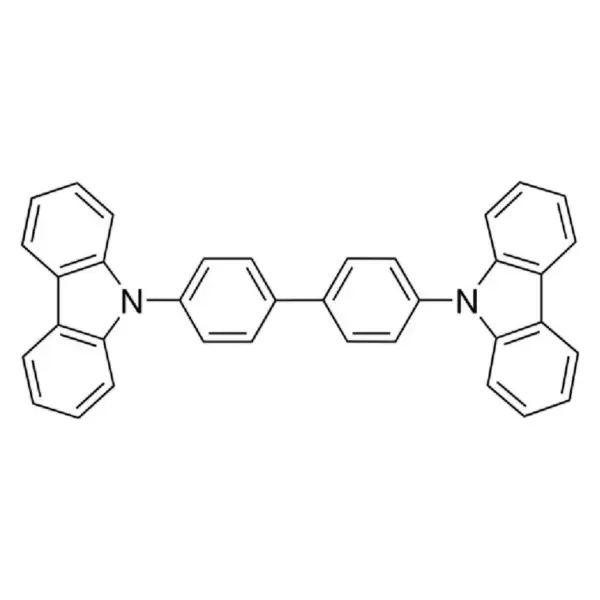
4,4′-Bis(N-carbazolyl)-1,1′-biphenyl – Sigma-Aldrich
RM1,730.00Brand:
Sigma-Aldrich
Synonyms
4,4′-Bis(9-carbazolyl)-1,1′-biphenyl, 4,4-N,N′-Dicarbazole-1,1′-biphenyl, CBP, DCBP
Cas No.
58328-31-7
General description
TGA/DSC lot-specific traces available upon request
We are committed to bringing you Greener Alternative Products, which adhere to one or more of The 12 Principles of Greener Chemistry. This product belongs to the Enabling category of greener alternatives, aligning with the “Design for energy efficiency” principle. Hole transport organic materials allow perfect energy level alignment with the absorber layer and therefore efficient charge collection, but are prone to degradation in ambient conditions. Click here for more information.

4,4′-Bis(N-carbazolyl)-1,1′-biphenyl, 97% – Sigma-Aldrich
RM571.00Brand:
Sigma-Aldrich
Synonyms
4,4′-Bis(9-carbazolyl)-1,1′-biphenyl, 4,4-N,N′-Dicarbazole-1,1′-biphenyl, CBP, DCBP
Cas No.
58328-31-7
General description
We are committed to bringing you Greener Alternative Products, which adhere to one or more of The 12 Principles of Greener Chemistry. This product belongs to the Enabling category of greener alternatives, aligning with the “Design for energy efficiency” principle. Hole transport organic materials allow perfect energy level alignment with the absorber layer and therefore efficient charge collection, but are prone to degradation in ambient conditions. Click here for more information.
Application
Organic Semiconductor Laser Materials
4,4′-Bis(N-carbazolyl)-1,1′-biphenyl is a hole-transport material in high-efficiency red OLEDs and electroluminescent dendritic complexes.
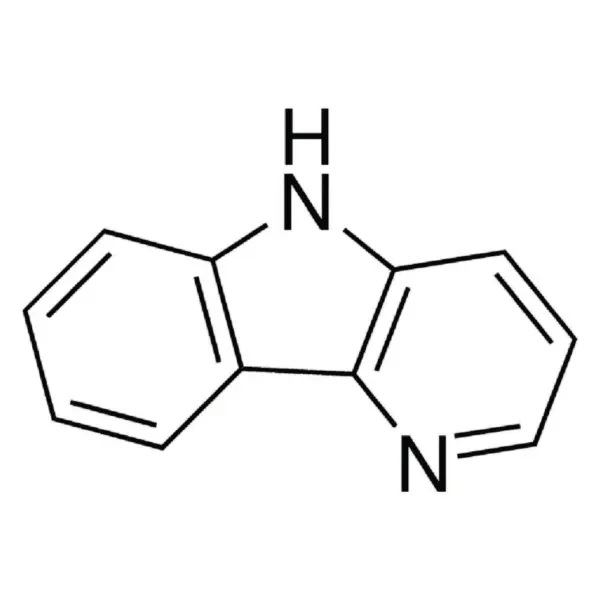
5H-Pyrido[3,2-b]indole – Sigma-Aldrich
RM1,374.00Brand:
Sigma-Aldrich
Synonyms
δ-Carboline
Cas No.
245-08-9
Application
Novel aromatic amine compound for organic electroluminescent device, illuminating device and display.[1]
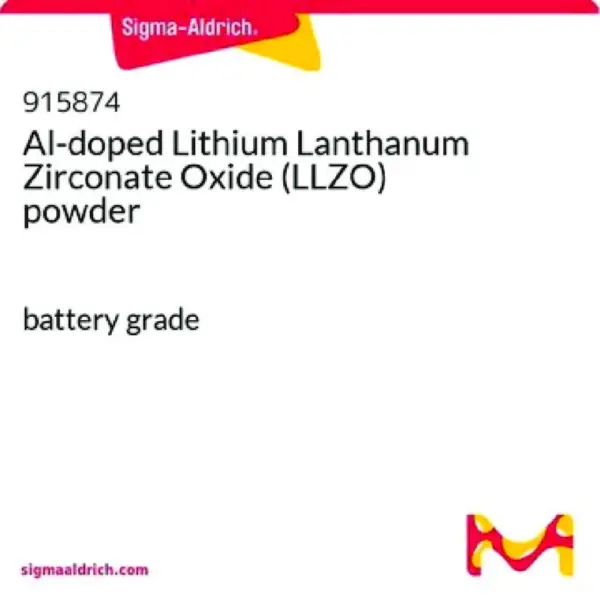
Al-doped lithium lanthanum zirconium oxide LLZO – Sigma-Aldrich
RM2,456.00Brand:
Sigma-Aldrich
Synonyms
Aluminum-doped cubic garnet LLZO, LLZALO
General Description
Battery-grade Al-doped Lithium Lanthanum Zirconate Oxide (LLZO) powder is a high-purity, inorganic material that is specifically designed for use in advanced battery applications. It is a white, crystalline powder with an average particle size of 5-6 microns and is composed of lithium, lanthanum, zirconium, oxygen, and a small amount of aluminum dopant. This material is known for its high ionic conductivity, which falls within the range of 0.01-0.1 mS/cm, making it an ideal electrolyte material for use in solid-state lithium-ion batteries. Moreover, the high purity and narrow particle size distribution of this powder make it well-suited for use in the precise and reproducible manufacturing of battery components.
Applications
The primary application of Al-doped LLZO powder is in all-solid-state and hybrid electrolytes for lithium-ion batteries. The unique combination of properties, including its high lithium-ion conductivity, robust chemical stability, and wide electrochemical stability window, make it a promising candidate for the next generation of solid-state batteries. This material has the potential to replace the conventional liquid electrolyte in lithium-ion batteries, offering higher energy density, improved safety, and longer lifespan. films.
Features & Benefits
Our LLZO powder provides high ionic conductivity and consistent particle size for reproducible results.
- Improved Battery Safety
- Increased Energy Density
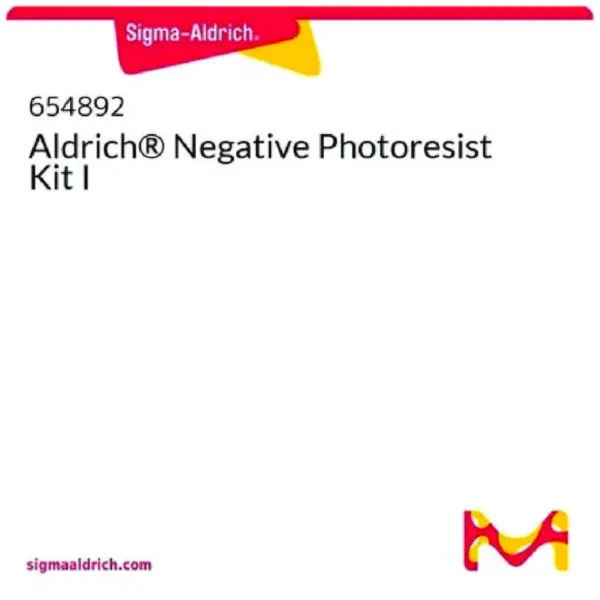
Aldrich® Negative Photoresist Kit I – Sigma-Aldrich
RM1,127.00Brand:
Sigma-Aldrich
Synonyms
–
Cas No.
–
General description
Aldrich® Negative Photoresist Kit I consists of materials for photolithography. The photoresist can be spin coated on the glass substrate for the formation of electrode arrays. The kit also provides masking and patterning on the glass surface.
Application
Aldrich® Negative Photoresist Kit I has been used in the fabrication of microelectrodes by photolithography.[2] It can also be used to fabricate the droplet-based microfluidic device, microfluidic chips, glass optical waveguides, and integrated grating couplers.[3][4]
Legal Information
Aldrich is a registered trademark of Sigma-Aldrich Co. LLC
Aluminum oxide, alpha phase, nanopowder, 135 nm avg. part. size, 99.9% trace metals basis – Sigma-Aldrich
RM846.00Brand:
Sigma-Aldrich
Synonyms
α-Al2O3, Alpha-alumina, Corundum, Dialuminium trioxide, Alumina
Cas No.
1344-28-1
General description
Aluminum oxide, alpha phase, nanopowder is a high-purity, ultrafine powder with an average particle size of 135 nm. Alpha-phase alumina nanopowder has superior mechanical and thermal stability, high hardness, and wear resistance. Its high dielectric strength and low dielectric loss make it a suitable material for insulators and capacitors in electronic components. Additionally, its biocompatibility, bioactivity, and wear resistance make it an attractive material for biomedical applications. This product has a purity of 99.9%, making it an ideal choice for a range of industrial applications. Our aluminum oxide nanopowder is carefully manufactured to ensure consistent quality and particle size distribution, resulting in superior performance and reliability.
We are committed to bringing you Greener Alternative Products, which belongs to one of the four categories of greener alternatives. This product has been enhanced for energy efficency. Click here for more information.
Application
Alpha-phase alumina nanopowder with a purity of 99.9% finds its major applications in the production of advanced ceramics, nanocomposites, and as a catalyst support material. The high surface area and excellent dispersibility of alpha-phase alumina nanoparticles make them ideal as a reinforcing agent in nanocomposites, where they improve the mechanical, thermal, and electrical properties of the composite material. In advanced ceramics, the fine particle size of alpha-phase alumina nanopowder makes it a suitable material for use where a high degree of homogeneity is required. Alpha-phase alumina nanopowder is also used as a support material for catalysts due to its high surface area and excellent thermal stability. It is particularly attractive for catalytic applications due to its low acidity and high chemical inertness.
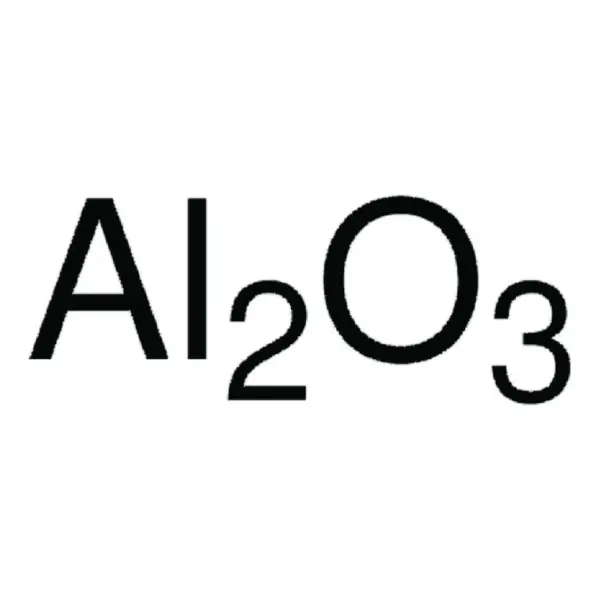
Aluminum oxide, gamma phase, nanopowder, 5 nm avg. part. size, 99.95% trace metals basis- Sigma-Aldrich
RM1,709.00Brand:
Sigma-Aldrich
Synonyms
γ-Al2O3, Cubic aluminium oxide, Gamma-alumina, Gamma-aluminum(III) oxide, Alumina
Cas No.
1344-28-1
General description
Gamma-phase Al2O3 is one of the several crystalline phases of aluminum oxide, also known as alumina. It has a cubic crystal structure with a high degree of symmetry, characterized by a closely packed arrangement of oxygen and aluminum ions, and tends to be highly porous. Our aluminum oxide nanopowder in the gamma phase is a high-purity product with 99.95% purity and an average particle size of 5 nm. This nanopowder is characterized by its high surface area, excellent dielectric properties, and resistance to corrosion and wear. Our aluminum oxide nanopowder is produced using advanced manufacturing techniques, ensuring uniform particle size and high purity.
We are committed to bringing you Greener Alternative Products, which belongs to one of the four categories of greener alternatives. This product has been enhanced for energy efficency. Click here for more information.
Application
Our gamma phase alumina nanopowder is useful in a variety of applications. Its high purity and small particle size make it an excellent catalyst and catalyst-support for chemical reactions, including dehydration, isomerization, hydrogenation, oxidation, reforming, and Fischer-Tropsch synthesis. Because of its porosity, it has many uses in pharmaceutical and industrial manufacturing processes as an adsorbent and desiccating agent. In addition, gamma-phase Al2O3 is a widely used material in the field of electronics due to its high dielectric constant, low dielectric loss, and excellent electrical insulation properties. Its ability to store electrical charge, retain its properties over a wide range of frequencies, and withstand high voltages make it an ideal choice for use in a wide range of electronic components, including capacitors, insulators, transformers, and high-frequency and high-voltage applications. The nanopowder′s hardness and stability make it suitable for use in wear-resistant coatings, and its resistance to corrosion and oxidation makes it a reliable material for high-temperature environments.

Aluminum oxide, nanopowder, <50 nm particle size (TEM)- Sigma-Aldrich
RM642.00Brand:
Sigma-Aldrich
Synonyms
Gamma Al2O3, Alumina
Cas No.
1344-28-1
General description
Aluminum oxide (Al2O3) based nanopowder is a metal oxide based nanosized material that can be used in a variety of industrial applications. It can be prepared by the hydrolysis of the alkoxide of Al2O3 and calcination of particles in the presence of stabilizing agents.
We are committed to bringing you Greener Alternative Products, which belong to one of the four categories of greener alternatives. Aluminum oxide serves as a multifunctional additive or coating in lithium-ion batteries, helping stabilize electrode–electrolyte interfaces, suppress side reactions, improve thermal stability, and extend cycle life. By enabling safer, longer-lasting cells, it reduces material waste and energy use across the battery lifecycle. Click here for more information.
Application
Al2O3 nanopowder can be used for a wide range of applications, such as ceramics,[3] aerospace,[4] wastewater treatment,[5] abrasives,[6] paints, catalysts, and flooring materials.
Aluminum oxide, nanopowder, 13 nm primary particle size (TEM), 99.8% trace metals basis – Sigma-Aldrich
RM1,298.00Brand:
Sigma-Aldrich
Synonyms
Aluminia, Alumina
Cas No.
1344-28-1
General description
Aluminum oxide nanoparticles (AlNPs) are porous nanomaterials with corundum-like structures. They possess high surface area, mechanical strength, and good optical properties. In addition, they have excellent chemical stability in harsh conditions such as abrasive environments and high temperatures. The ease of surface modification and bioinertess make them suitable for biomedical applications. These nanomaterials can be prepared by a cost-effective and simple protocol.
We are committed to bringing you Greener Alternative Products, which belong to one of the four categories of greener alternatives. Aluminum oxide serves as a multifunctional additive or coating in lithium-ion batteries, helping stabilize electrode–electrolyte interfaces, suppress side reactions, improve thermal stability, and extend cycle life. By enabling safer, longer-lasting cells, it reduces material waste and energy use across the battery lifecycle. Click here for more information.
Application
Aluminum nanoparticles can be used to prepare:
- Water-based nanofluids, which are used in engine cooling, heat exchangers, and nuclear cooling system. In graphene oxide/alumina nanofluid, the addition of aluminum nanoparticles improves the physical structure of graphene oxide and reduces the viscosity of the composite.
- Polysiloxane-aluminum oxide composites, applicable as an elastomeric thermal pad for light-emitting diodes.
It can also be used as an additive to improve the mechanical properties of polyvinyl chloride. The Al2O3 nanoparticles act as a solid inert phase in the polymer matrix and restrict the mobility of chains. As a result glass transition temperature increases and elastic modulus decreases.
Features and Benefits
- Stable in a harsh non-biological environment.
- They can be easily prepared through established synthesis methods.
- A vast surface area allows conjugation with chemical and biological molecules.
- Their surface modification protocols are straightforward.
- They can easily interact with biological interfaces.
Barium titanate(IV), nanopowder (cubic crystalline phase), <100 nm particle size (BET), ≥99% trace metals basis - Sigma-Aldrich
RM1,979.00Brand:
Sigma-Aldrich
Synonyms
Barium titanium oxide, Titanium barium oxide
Cas No.
12047-27-7
General description
Barium titanate(IV) is a ceramic material that can be synthesized by reacting titanium oxide (TiO2) and barium salts in the presence of oleic acid as a stabilizing agent. It has a cubic crystal structure which allows it to have ferroelectric, thermoelectric and piezoelectric properties. It forms a film with intense photoluminescence which can be used for a wide range of electronic applications.
Application
BaTiO3 can be used in the fabrication of flexible electronic devices with improved dielectric strength.
Physical form
Some agglomeration of nanoparticles may occur during the drying process, yielding particle sizes of up to 75 microns. These agglomerates can be broken up through ultrasonication, ball milling, or dispersion in solution with a surfactant.
Barium titanate(IV), nanopowder (cubic), 50 nm (SEM), 99.9% trace metals basis – Sigma-Aldrich
RM1,979.00Brand:
Sigma-Aldrich
Synonyms
BaTiO3 nanoparticles, Barium titanium oxide, Barium titanium trioxide, Titanium barium oxide
Cas No.
12047-27-7
General description
This barium titanate(IV) nanopowder is a very fine white powder made of barium titanate nanoparticles with an average particle size of 50 nm. The synthesis is controlled so that the material crystallizes in the cubic polymorph, which is centrosymmetric with no spontaneous dipole.
Application
Barium Titanate is an effective lead free piezoelectric material and has been studied as a component of polymer nanocomposites and as a probe for cell imaging.
Bathocuproine, 96% – Sigma-Aldrich
Price range: RM444.00 through RM721.00Brand:
Sigma-Aldrich
Synonyms
2,9-Dimethyl-4,7-diphenyl-1,10-phenanthroline, BCP
Cas No.
4733-39-5
General description
We are committed to bringing you Greener Alternative Products, which adhere to one or more of The 12 Principles of Greener Chemistry. This product belongs to the Enabling category of greener alternatives, aligning with the “Design for energy efficiency” principle. Electron transport organic materials have the chemical functionality to transport electrons and are used as an electron transport layer in OLED devices. Click here for more information.
Application
Bathocuproine can be used as an electron-modification layer or interlayer between the ETL (electron transport layer) in perovskite solar cells, which can be fabricated using the spin-coating deposition method or the vacuum thermal evaporation method. The addition of bathocuproine enhances the power conversion efficiency of organic photovoltaic cells.
Bathocuproine, sublimed grade, 99.99% trace metals basis – Sigma-Aldrich
RM1,436.00Brand:
Sigma-Aldrich
Synonyms
2,9-Dimethyl-4,7-diphenyl-1,10-phenanthroline, BCP
Cas No.
4733-39-5
General description
TGA/DSC Lot-specific scans available upon request
We are committed to bringing you Greener Alternative Products, which adhere to one or more of The 12 Principles of Greener Chemistry. This product belongs to the Enabling category of greener alternatives, thus aligns with “Design for energy efficiency”. Electron transport organic materials have the chemical functionality to transport electrons and are used as an electron transport layer in OLED devices. Click here for more information.
Application
Organic electronic material useful as OLED electron transporter and hole blocker.
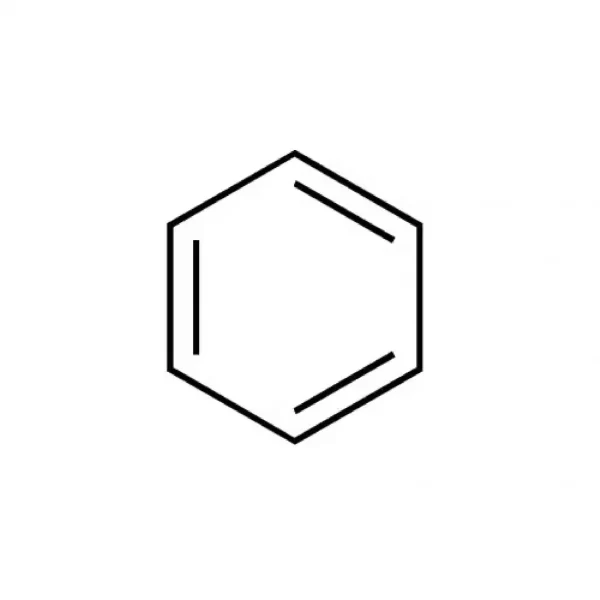
Benzene Anhydrous, 99.8% – Sigma-Aldrich
RM912.00Brand:
Sigma-Aldrich
Description
CAS Number: 71-43-2
Empirical Formula: C6H6
Molecular Weight: 78.11
Synonyms: –
Assay: 99.8%
Benzene is a six-membered aromatic compound that can undergo ionization induced by superhalogens, according to ab initio calculations. This compound is a frequently used industrial solvent but is also considered an air pollutant and a powerful carcinogen.
Benzene may be used in the formation of phenyl acetate by aerobic oxidation using Pd catalyst and acetic acid as solvent, formation of phenol by hydroxylation in the presence of mesoporous carbon nitride supported on vanadium catalyst and as a solvent to prepare nanoparticles of gallium nitride (GaN) by reacting Li3N and GaCl3 at 280°C.
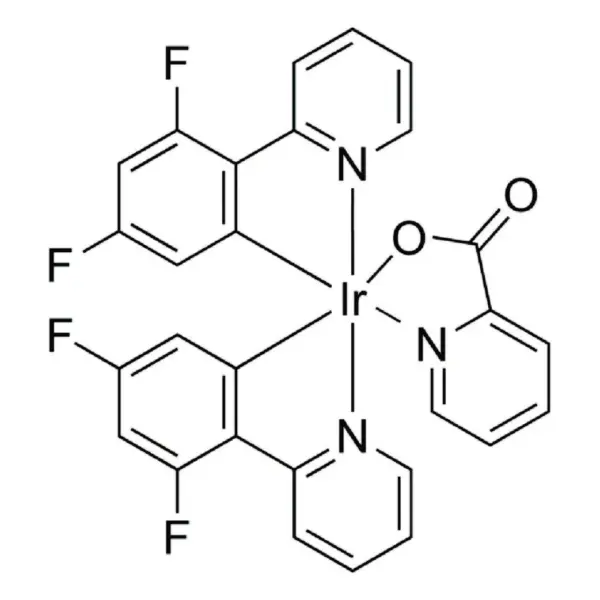
Bis[2-(4,6-difluorophenyl)pyridinato-C2,N](picolinato)iridium(III) – Sigma-Aldrich
RM1,192.00Brand:
Sigma-Aldrich
Synonyms
F2Irpic, FIrpic
Cas No.
376367-93-0
Application
FIrpic is a light blue heteroleptic triplet emitter. This material is typically doped into host matrices such as tetra-aryl silanes and short conjugation length carbazole derivatives in OLEDs, showing a good quantum efficiency.
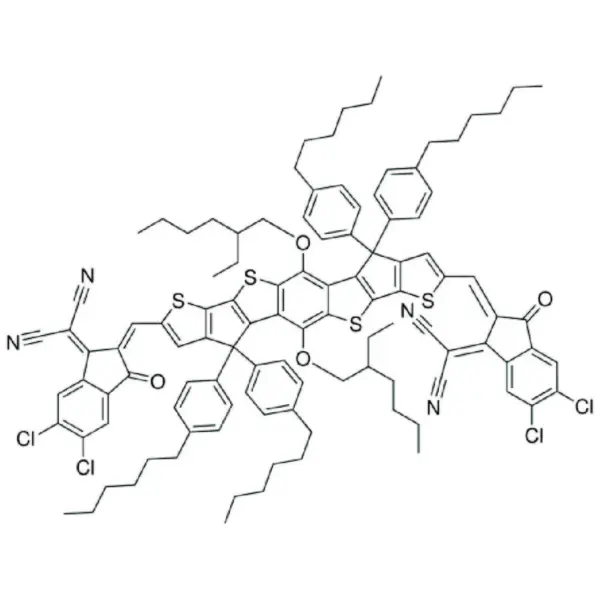
BT-CIC – Sigma-Aldrich
RM3,693.00Brand:
Sigma-Aldrich
Synonyms
4,4,10,10-tetrakis(4-hexylphenyl)-5,11-(2-ethylhexyloxy)-4,10-dihydrodithienyl[1,2-b:4,5b′ ]benzodithiophene-2,8-diyl)bis(2-(3-oxo-2,3-dihydroinden-5,6-dichloro-1-ylidene)malononitrile), NFA147, PCE147
CAS No
2197167-51-2
General Description
BT-CIC is a highly efficient, ultra-narrow bandgap, NIR absorbing, non-fullerene acceptor, designed to use in high performance organic photovoltaic devices.
A recently reported tandem cell, employing BT-CIC as the non-fullerene acceptor and PCE-10 as donor for the back cell showed an PCE of 15%.
Device performance:
Tandem [Front] (170 nm DTDCPB:C70 + ARC) [Back]PCE-10:BTCIC (1:1.5, 75 nm)
Jsc=13.3 ± 0.3 mA/cm2
Voc=1.59 ± 0.01 V
FF=0.71± 0.01
PCE=15.0% ± 0.3%
ARC: an antireflection coating
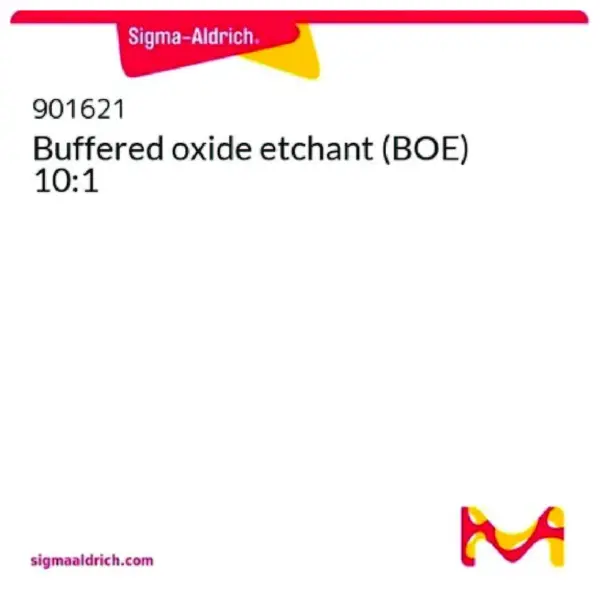
Buffered oxide etchant (BOE) 10:1 – Sigma-Aldrich
RM660.00Brand:
Sigma-Aldrich
Synonyms
BHF, Buffered HF
Cas No.
–
General Descriptions
Buffered oxide etchant (BOE) is a wet etchant used in microfabrication. Its primary use is in etching thin films of silicon dioxide (SiO2) or silicon nitride (Si3N4). It is a mixture of a buffering agent, such as ammonium fluoride (NH4F), and hydrofluoric acid (HF). Concentrated HF etches silicon dioxide too quickly for good process control and also peels the photoresist used in lithographic patterning.
Application
Buffered oxide etchant (BOE) 10:1 can be used in the etching of titanium carbide, which can be used in microelectromechanical systems (MEMS). It can also be used in the etching of spin-on-dopant (SOD) for the development of conductor-insulator-conductor tunnelling diodes. It can also be used to enhance the surface of fused quartz devices.

